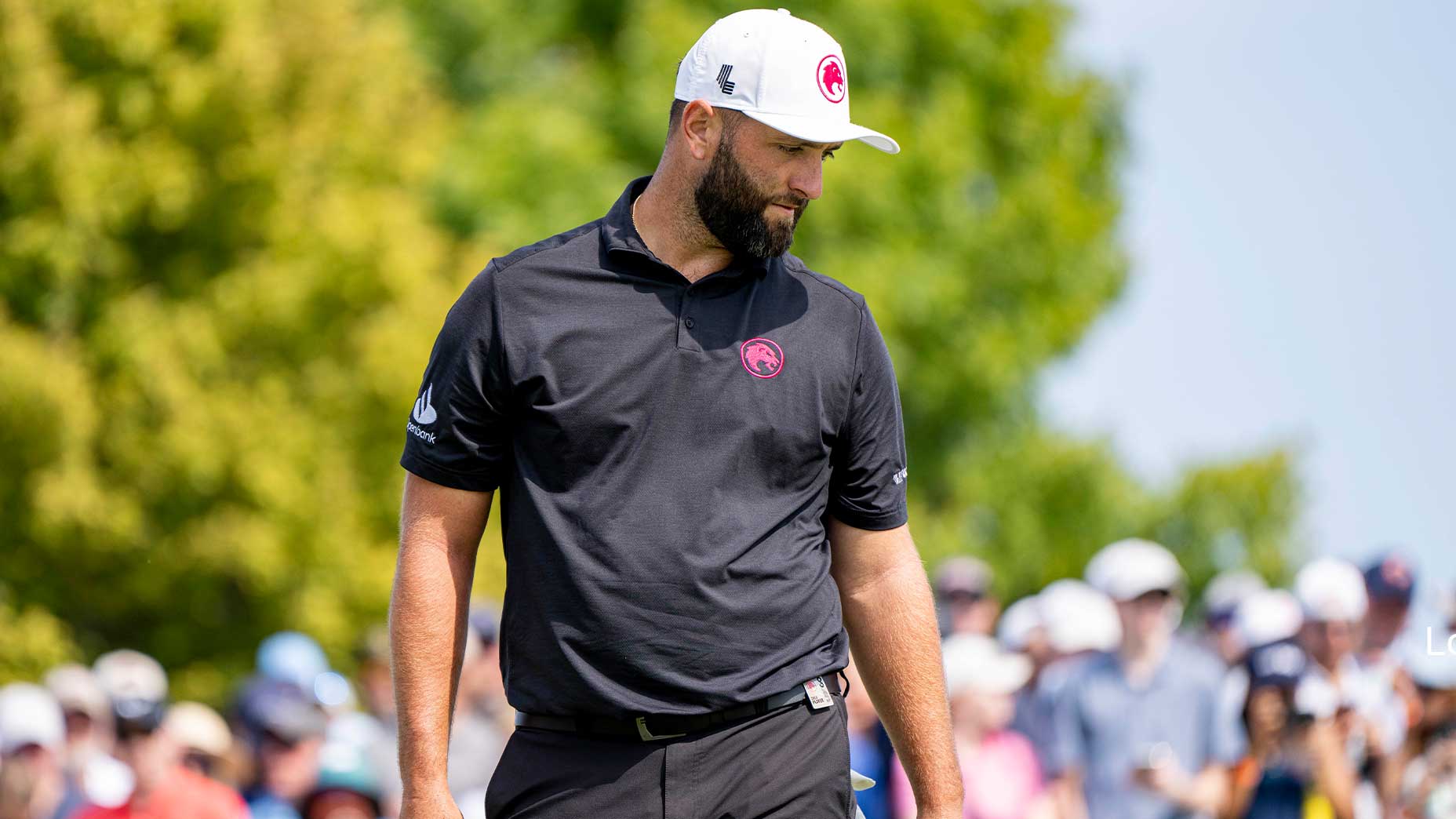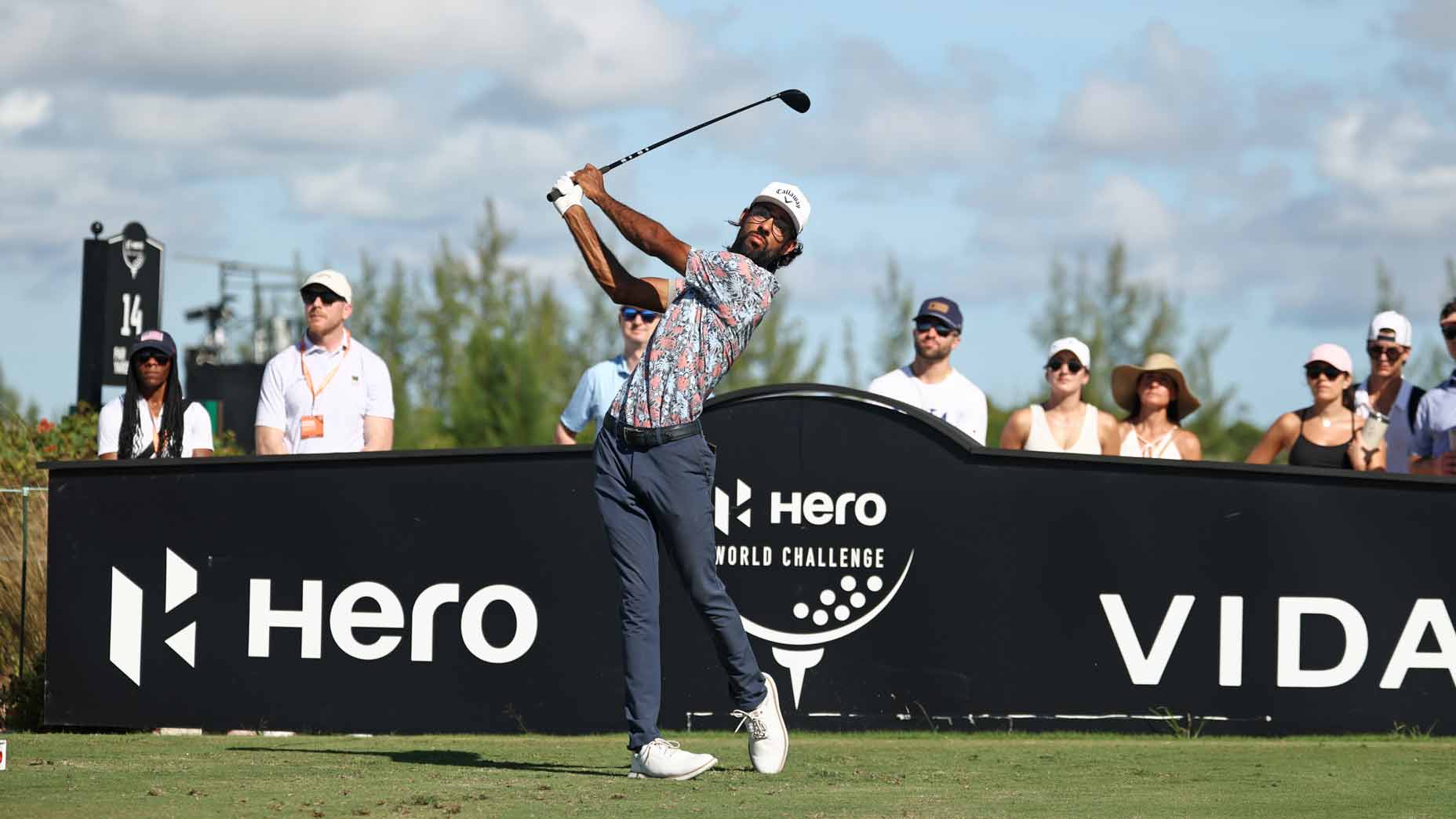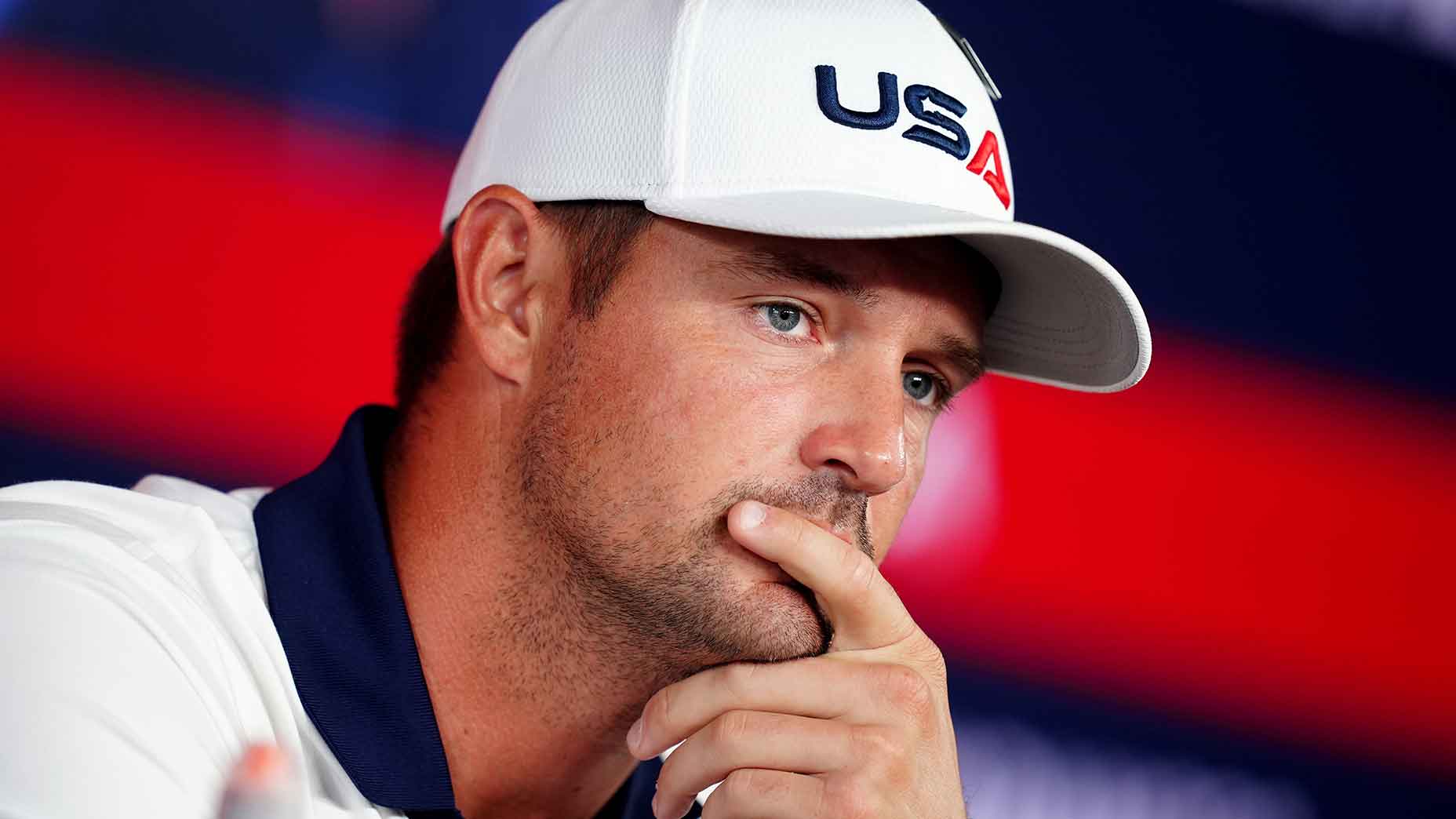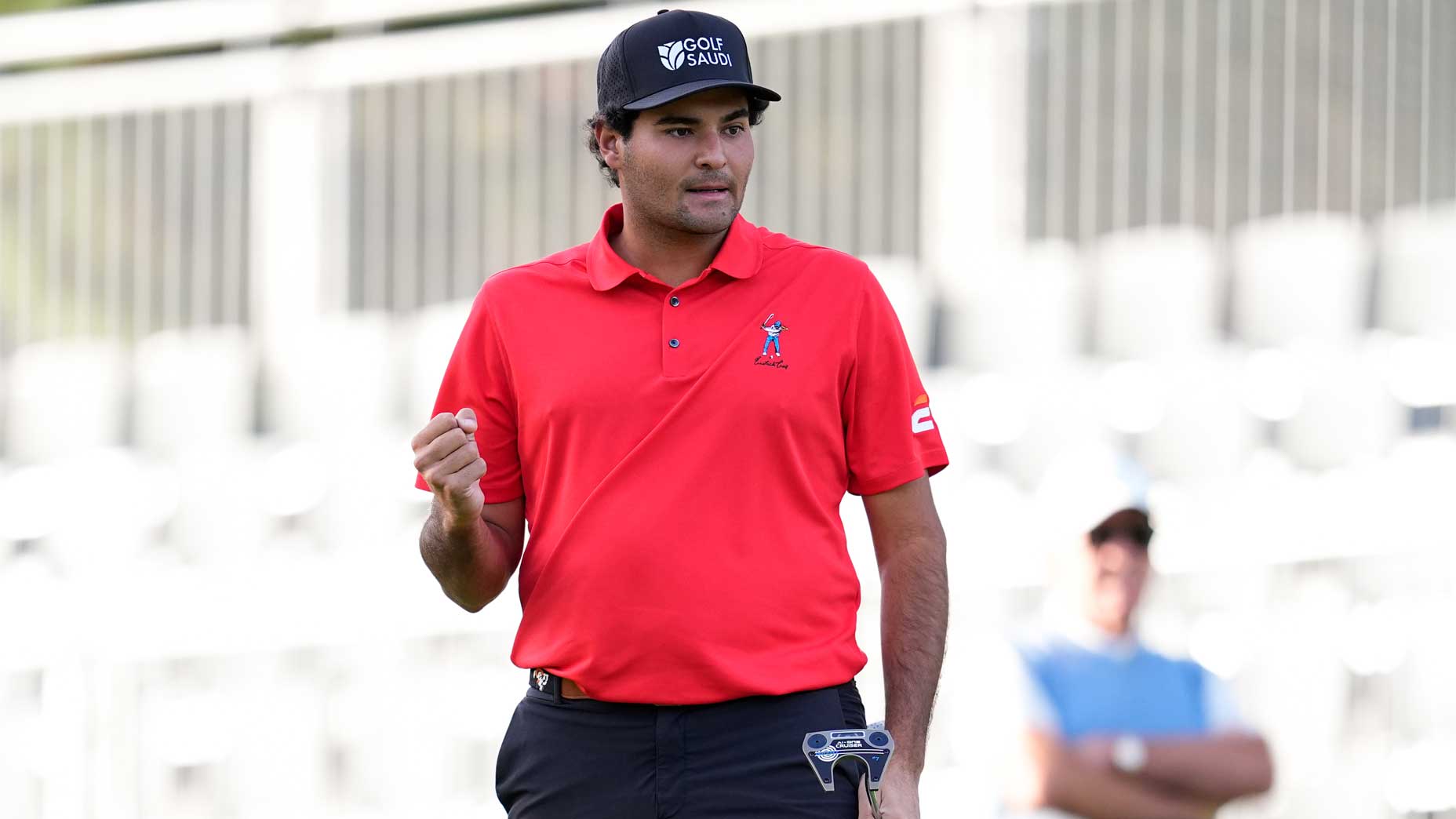Most of the time, TV ratings require nuance.
Anyone can read the numbers, but the numbers don’t always tell you everything you need to know. A favorable time slot, pre-broadcast audience tailwinds, or a lack of alternative options can boost a good rating in much the same way a scheduling snafu, extra opponent, or changed timezone can influence a bad one.
But the numbers from this weekend’s professional golf tournaments — the LIV individual championship and the PGA Tour’s Procore Championship — need no such context. They were bad by any objective measure, raising the latest warning of a TV audience exodus driven by years of division and confusion in the pro game.
We’ll start with the PGA Tour, which recorded 69,000 average viewers during Sunday’s final round at the Procore Championship in Napa, less than a quarter of the audience that tuned into Sahith Theegala’s final round victory in the same event last fall.
The Procore Championship (formerly the Fortinet Championship, Safeway Open and Frys Open) was not aided by the same Netflix star-winner support it received in ’23. Instead, PGA Tour journeyman Patton Kizzire seized a five-shot win over a light field. The final round aired opposite the NFL on Golf Channel, which reaches a far smaller audience than most traditional PGA Tour broadcasts on NBC and CBS. Still, the final number was paltry even by Golf Channel’s diminished viewership standards, considering it ranked beneath the August average for a Golf Channel telecast of any kind (76,000).

Kizzire’s win kicked off a FedEx Cup Fall Season refashioned by the PGA Tour to serve as a feeder series for the big tour. The Tour shifted away from its “wraparound schedule” to amplify its biggest events during the spring and summer months when sports TV competition is comparatively light. But the downside of that shift is that it risks ceding the fall months to the NFL and college football entirely — a change that could further harm the rest of the Tour’s diminishing TV ratings.
The situation was just as dire across the street at LIV, where only 89,000 average viewers tuned into Sunday’s final round of the league’s individual championship in Chicago, less than one-third of the 286,000 viewers that tuned into the league’s first event on the CW in Mexico last February.
LIV’s ratings were closer to its averages, but the league didn’t have the PGA Tour’s built-in challenges of a journeyman winner, a weaker point in its yearlong schedule or an event that aired exclusively on cable. Rather, LIV’s averages — which fall safely below the August averages on such cable channels as Great American Family, Disney Junior and Up TV — came from the final round of what might be its biggest event of the year, with one of the league’s highest-priced stars claiming a big-money victory on the league’s typical broadcast network home, the CW.
We’ll point out here that LIV and the PGA Tour faced lots of competition in the sports world this weekend, including a typical bludgeoning from the NFL’s TV behemoth and a pair of in-house competitors, the Irish Open and Solheim Cup. These items no doubt combined to steal market share from the two major pro tour telecasts, but it’s also fair to ask if, even given these headwinds, telecasts from the two largest pro tours in the world should be capable of producing viewership larger than a combined 158,000 average viewers.
Tempting as it is to focus on these questions, or more specific issues with either league’s television and competitive products, another gloomy batch of ratings raises bigger concerns about the health of the sport’s TV product more broadly.
LIV’s intrusion into the sport has made pros fabulously wealthy and infused billions in new investment, but it has cost golf dearly in terms of public goodwill. Scores of casual golf fans have reported tuning out of pro golf after being angered by the sport’s partisan rancor, turned off by its lack of week-to-week star power, disinterested in its new competitive formats or confused by the on-again, off-again state of peace talks between the two sides, which have now stretched to 15 months without any clear solutions.
Over the last nine months, executives at both leagues and several networks have slow-walked concerns raised about the state of the TV audience, but the growing number of questions surrounding sagging ratings underscored a deeper truth: the numbers were dropping.
“Let’s not get ahead of ourselves when it comes to the ratings stuff. It’s early to be worried,” CBS Sports chief David Berson told GOLF in May, a point echoed in later months by executives at NBC, LIV, and more recently, PGA Tour commissioner Jay Monahan.
At the end of the 2024 regular season, SBJ’s Josh Carpenter quoted one PGA Tour network partner as having faced a year-over-year ratings swoon of 15 to 17 percent, far outpacing the dips faced by other sports properties as cord-cutting continues to proliferate.
“I think when you look at 2024, it’s important to note, and I’m going to note it, that overall consumption across our platforms in aggregate is up,” Monahan said at the Tour Championship last month. “That’s a really good sign for the PGA Tour and the engagement that we have with our fans.”
Consumption data is good for optics, but ratings are still where sports leagues and networks make their money. The value of a sports TV deal is tied intrinsically to the size of the audience and the volume of advertisements sold — without either, a deal isn’t nearly as valuable.
This is why LIV has struggled to gain a noticeable foothold with advertisers and corporate partners, and why it has entertained extending its agreement with the CW despite those same audience development struggles. It’s also why the PGA Tour is spending the fall looking for innovative solutions for its telecasts, including its curious influencer pilot program, the “Creator Classic.”
None of this is to say that pro golf is headed in a hopeless direction, or that the losses of the last several years are unfixable next to the combined financial might of golf’s two major pro tours. It is to say, however, that the problem of television ratings in golf is real, and that each of golf’s stakeholders bears a piece of the responsibility.
After the latest round of ratings, it’s okay to be blunt.
Like what you read? Subscribe to James Colgan’s Hot Mic Newsletter and get the scoop on golf media news in your inbox before it lands on the web.
You can reach the author at james.colgan@golf.com.










